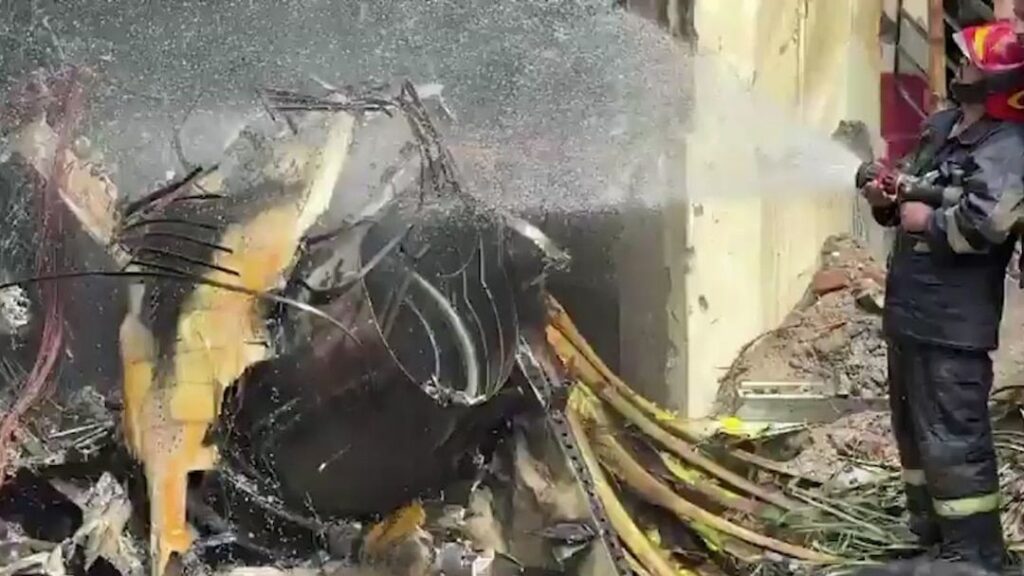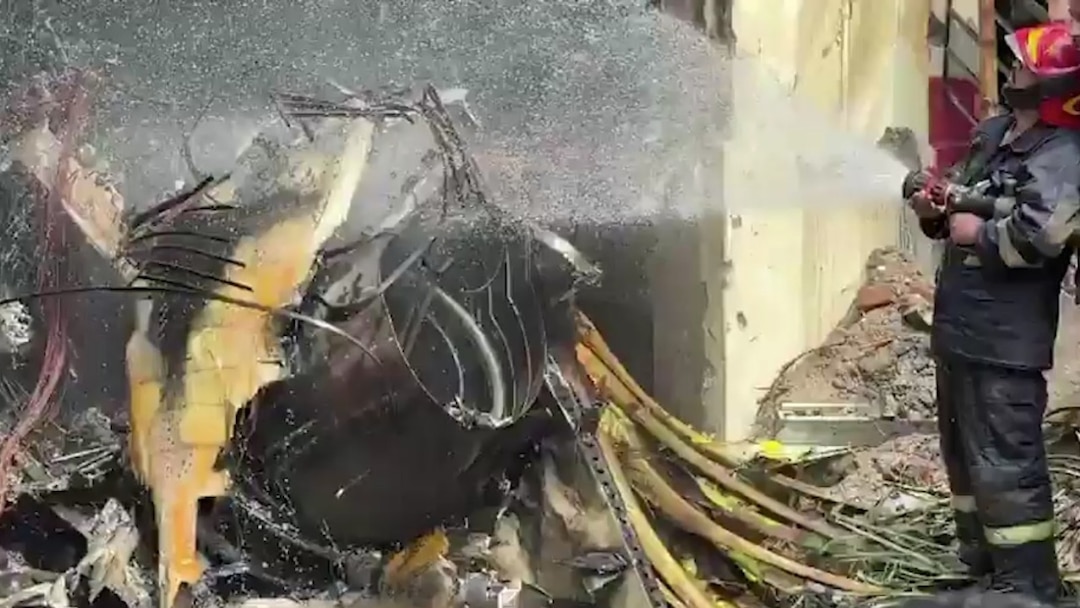
Bangladesh Fighter Jet Crashes in Chattogram During Routine Training: Pilot Ejects Safely
In a serious incident that has drawn attention to the state of military aviation in Bangladesh, a Bangladesh Air Force (BAF) F-7BG fighter jet crashed in the Sitakunda area of Chattogram on Sunday, July 21, 2025. The aircraft went down during a routine training flight, triggering a swift military and civilian emergency response. The pilot of the aircraft ejected safely and is currently under treatment at the Combined Military Hospital (CMH) in Chattogram.
According to the Inter Services Public Relations Directorate (ISPR), the crash occurred around 11:30 AM near the Bayezid Link Road in Sitakunda upazila, close to the Bhatiary Military Training Area. Preliminary information suggests that the aircraft experienced technical difficulties during flight, prompting the pilot to activate the ejection system moments before the jet went down in a remote hilly region. Eyewitnesses confirmed hearing a loud explosion followed by smoke, which could be seen from several kilometers away.
The aircraft involved was an F-7BG, a variant of the Chinese Chengdu J-7, which itself is a licensed copy of the Soviet-era MiG-21. Bangladesh has operated the F-7 series since the 1980s, and the fleet remains a core part of its air defense despite being technologically outdated compared to modern fighter jets.
This is not the first time a crash involving an F-7 has occurred. In December 2022, another BAF F-7 aircraft crashed into the Karnaphuli river after taking off from the same Chattogram air base. In that incident, the pilot also managed to eject and survive. Over the past decade, at least six crashes involving F-7 aircraft have been documented, raising concerns about the safety and longevity of these jets.
The Air Force confirmed that the pilot in the July 21 crash was experienced and had followed all standard operating procedures. His parachute deployed successfully, and he was located by a rescue team within minutes. Medical authorities at the CMH stated that he sustained minor injuries and remains under observation.
Military officials have cordoned off the crash site and launched a full investigation to determine the root cause of the accident. The wreckage has been secured, and experts are now analyzing black box data, flight logs, and communication transcripts. The ISPR emphasized that the findings of the investigation will be made public once the internal review is complete.
Defence analysts in Bangladesh have frequently urged the government to accelerate modernization of the Air Force fleet, which still includes several aging platforms. While the country has taken steps in recent years—such as procuring Yak-130 trainers and K-8W aircraft—the bulk of the combat fleet still relies on older systems like the F-7, which many believe have exceeded their optimal service life.
This crash is expected to reignite debate over the pace of military upgrades, with experts pointing out that technical failures in older aircraft can pose serious risks not only to personnel but also to civilians if such accidents occur in populated areas. Fortunately, in the July 21 incident, there were no casualties on the ground, and property damage was minimal due to the crash site being located in a sparsely populated hilly zone.
Local law enforcement and firefighters were seen working alongside military personnel to secure the site and ensure safety for nearby residents. Authorities have asked the public to stay away from the area as clean-up and assessment operations continue.
As of now, no official statement has been made regarding whether this crash will impact future training missions or trigger a temporary grounding of the F-7 fleet. However, internal sources indicate that a temporary operational pause for inspection of similar aircraft is already being considered.
The Bangladesh Air Force has faced growing pressure in recent years to modernize its aerial capabilities in line with regional trends. Neighboring countries like India and Myanmar have begun replacing legacy platforms with advanced multi-role fighters, making Bangladesh’s reliance on aging jets a strategic concern.
This incident underscores the operational hazards associated with outdated airframes and will likely add urgency to ongoing discussions about procurement of new-generation aircraft. Until the investigation is complete and safety upgrades are implemented, routine air operations may be subject to heightened scrutiny and additional safety checks.
The crash on July 21 serves as yet another reminder of the risks associated with maintaining older aircraft fleets and the importance of continuous upgrades to national defense infrastructure. More updates are expected as the inquiry progresses.

